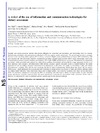Identificador persistente para citar o vincular este elemento:
https://accedacris.ulpgc.es/jspui/handle/10553/44758
| Campo DC | Valor | idioma |
|---|---|---|
| dc.contributor.author | Ngo, Joy | en_US |
| dc.contributor.author | Engelen, Anouk | en_US |
| dc.contributor.author | Molag, Marja | en_US |
| dc.contributor.author | Roesle, Joni | en_US |
| dc.contributor.author | García-Segovia, Purificación | en_US |
| dc.contributor.author | Serra-Majem, Lluís | en_US |
| dc.date.accessioned | 2018-11-22T02:17:54Z | - |
| dc.date.available | 2018-11-22T02:17:54Z | - |
| dc.date.issued | 2009 | en_US |
| dc.identifier.issn | 0007-1145 | en_US |
| dc.identifier.other | WoS | - |
| dc.identifier.other | Scopus | - |
| dc.identifier.uri | https://accedacris.ulpgc.es/handle/10553/44758 | - |
| dc.description.abstract | Presently used dietary-assessment methods often present difficulties for researchers and respondents, and misreporting errors are common. Methods using information and communication technologies (ICT) may improve quality and accuracy. The present paper presents a systematic literature review describing studies applying ICT to dietary assessment. Eligible papers published between January 1995 and February 2008 were classified into four assessment categories: computerised assessment personal digital assistants (PDA); digital photography; smart cards. Computerised assessments comprise frequency questionnaires, 24 h recalls (24HR) and diet history assessments. Self-administered computerised assessments, which can include audio support, may reduce literacy problems, be translated and are useful for younger age groups, but less so for those unfamiliar with computers. Self-administered 24HR utilising computers yielded comparable results as standard methods, but needed supervision if used in children. Computer-assisted interviewer-administered recall results were similar to conventional recalls, and reduced inter-interviewer variability. PDA showed some advantages but did not reduce underreporting. Mobile phone meal photos did not improve PDA accuracy. Digital photography for assessing individual food intake in dining facilities was accurate for adults and children, although validity was slightly higher with direct visual observation. Smart cards in dining facilities were Useful for measuring food choice but not total dietary intake. In conclusion, computerised assessments and PDA are promising, and could improve dietary assessment quality in sonic Vulnerable groups and decrease researcher workload. Both still need comprehensive evaluation for micronutrient intake assessment. Further work is necessary for improving ICT tools in established and new methods and for their rigorous evaluation. | en_US |
| dc.language | eng | en_US |
| dc.publisher | 0007-1145 | - |
| dc.relation.ispartof | British Journal of Nutrition | en_US |
| dc.source | British Journal of Nutrition [ISSN 0007-1145], v. 101 (sup. 2), p. s102-s112, (Julio 2009) | en_US |
| dc.subject | 3206 Ciencias de la nutrición | en_US |
| dc.subject | 570106 Documentación | en_US |
| dc.subject.other | Personal Digital Assistant | en_US |
| dc.subject.other | Physical-Activity | en_US |
| dc.subject.other | Intervention | en_US |
| dc.subject.other | Validation | en_US |
| dc.subject.other | Validity | en_US |
| dc.subject.other | Diet Assessment | en_US |
| dc.subject.other | Methods | en_US |
| dc.subject.other | Information And Communication Technologies | en_US |
| dc.subject.other | Review | en_US |
| dc.title | A review of the use of information and communication technologies for dietary assessment | en_US |
| dc.type | info:eu-repo/semantics/review | en_US |
| dc.type | Article | en_US |
| dc.identifier.doi | 10.1017/S0007114509990638 | en_US |
| dc.identifier.scopus | 2-s2.0-70149121285 | - |
| dc.identifier.scopus | 70149121285 | - |
| dc.identifier.isi | 000268650500013 | - |
| dc.contributor.authorscopusid | 7004471656 | - |
| dc.contributor.authorscopusid | 56448505000 | - |
| dc.contributor.authorscopusid | 23027955700 | - |
| dc.contributor.authorscopusid | 34873373000 | - |
| dc.contributor.authorscopusid | 55890389600 | - |
| dc.contributor.authorscopusid | 35596972100 | - |
| dc.contributor.authorscopusid | 57214499407 | - |
| dc.identifier.eissn | 1475-2662 | - |
| dc.description.lastpage | S112 | en_US |
| dc.identifier.issue | SUPPL. 2 | - |
| dc.description.firstpage | S102 | en_US |
| dc.relation.volume | 101 | en_US |
| dc.investigacion | Ciencias de la Salud | en_US |
| dc.type2 | Reseña | en_US |
| dc.contributor.daisngid | 1165987 | - |
| dc.contributor.daisngid | 4652141 | - |
| dc.contributor.daisngid | 4372767 | - |
| dc.contributor.daisngid | 23103352 | - |
| dc.contributor.daisngid | 4680903 | - |
| dc.contributor.daisngid | 28836 | - |
| dc.description.numberofpages | 11 | en_US |
| dc.utils.revision | Sí | en_US |
| dc.contributor.wosstandard | WOS:Ngo, J | - |
| dc.contributor.wosstandard | WOS:Engelen, A | - |
| dc.contributor.wosstandard | WOS:Molag, M | - |
| dc.contributor.wosstandard | WOS:Roesle, J | - |
| dc.contributor.wosstandard | WOS:Garcia-Segovia, P | - |
| dc.contributor.wosstandard | WOS:Serra-Majem, L | - |
| dc.date.coverdate | Julio 2009 | en_US |
| dc.identifier.supplement | 2 | - |
| dc.identifier.ulpgc | Sí | es |
| dc.description.jcr | 3,446 | |
| dc.description.jcrq | Q1 | |
| dc.description.scie | SCIE | |
| item.grantfulltext | open | - |
| item.fulltext | Con texto completo | - |
| crisitem.author.dept | GIR IUIBS: Nutrición | - |
| crisitem.author.dept | IU de Investigaciones Biomédicas y Sanitarias | - |
| crisitem.author.dept | Departamento de Ciencias Clínicas | - |
| crisitem.author.orcid | 0000-0002-9658-9061 | - |
| crisitem.author.parentorg | IU de Investigaciones Biomédicas y Sanitarias | - |
| crisitem.author.fullName | Serra Majem, Luis | - |
| Colección: | Reseña | |
Citas SCOPUSTM
141
actualizado el 08-jun-2025
Citas de WEB OF SCIENCETM
Citations
127
actualizado el 08-jun-2025
Visitas
108
actualizado el 14-dic-2024
Descargas
197
actualizado el 14-dic-2024
Google ScholarTM
Verifica
Altmetric
Comparte
Exporta metadatos
Los elementos en ULPGC accedaCRIS están protegidos por derechos de autor con todos los derechos reservados, a menos que se indique lo contrario.
